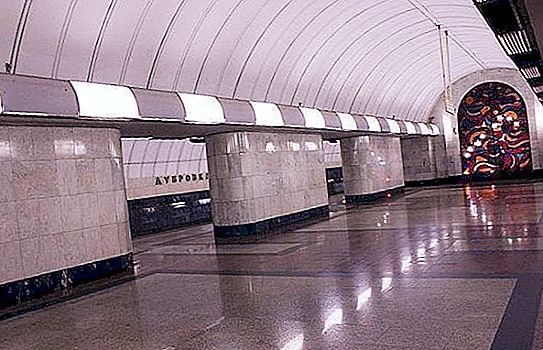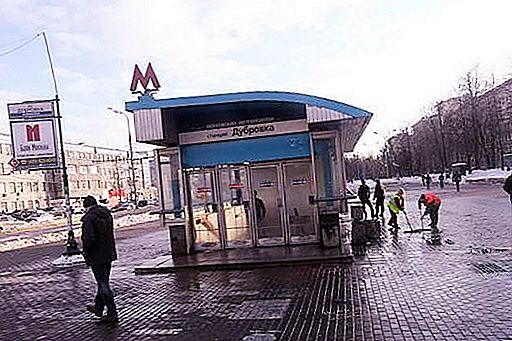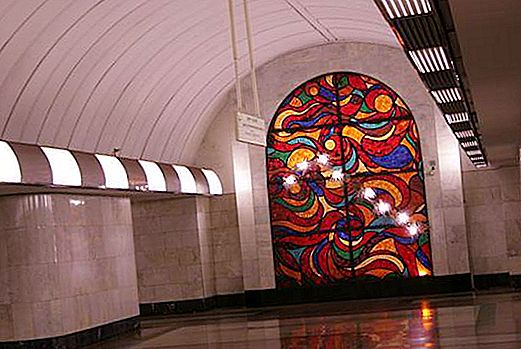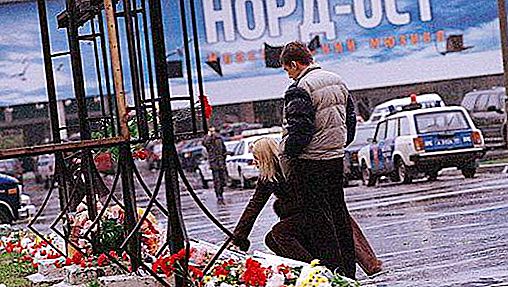Dubrovka metro station is located on the Lublin-Dmitrov line. It was opened in 1999. However, the construction of this station took longer than anticipated. What is the reason for the multiple postponement of the opening date of the Dubrovka metro station? This, as well as the area in which the station is located, will be discussed in this article.
Construction
Quicksand is the most insidious enemy of metro builders. Representing the soil saturated with water, it liquefies under mechanical influence, thereby slowing down the process of opening the pit. This problem was first encountered by workers back in the thirties, when the first Moscow metro stations were being built. Then the metro builders began to apply such technology as soil freezing. This method "arrived" in the capital from distant Siberia, where prospectors have long learned how to freeze mines in order to speed up penetration.

However, the trouble is that the Dubrovka metro station was built in an area where several industrial enterprises operated. It was not so easy to freeze the soil. At the enterprises, hot water leaked regularly; the quicksand below was constantly heated. Under such conditions, deep freezing is not possible. The construction of the Dubrovka metro was suspended. For four years, trains ran from the Peasant Outpost to the Kozhukhovskaya without stopping.
Dubrovka metro station was opened due to the economic crisis, which reached unprecedented proportions by the end of the nineties. As you know, most of the enterprises in these years ceased to operate. The stopped plants no longer heated the groundwater, and the work was completed.
Architectural features
Station "Dubrovka" is located from the surface at a distance of sixty-two meters. It is a column-wall three-vaulted. The interior of this station does not have bright distinctive features, with the exception of the mosaic panel located at the end of the hall. The flooring is red, gray and black granite. The author of the mentioned panel is a famous artist and sculptor Zurab Tsereteli.

The construction project of the Dubrovka metro was created in the early nineties. The working name of the station is "Sharikopodshipnikovskaya". As already mentioned, on the surface is an industrial enterprise. Hence the name. However, it is worthwhile to elaborate on the history of the district in which the Dubrovka metro was opened in 1999.
District
When exactly the village of Dubrovka arose on the territory of modern Moscow is not exactly known. But the first information about this settlement is noted in historical sources dating back to the fourteenth century. Until the 18th century, the village was part of the Krutitsky Compound.

Several centuries ago, the Dubrovka area could not be called picturesque. However, like most historical places of the capital. But in the area where the Dubrovka metro station was opened at the end of the 21st century, once upon a time, for many years, there was a huge sewage system. In addition, a slaughterhouse and irrigation fields were arranged here. The location of the village was such that the fetid odors from which the locals suffered did not penetrate the city center. It's all about the Moscow wind rose, which was taken into account when organizing sewage in Dubrovka.
The first plants in this area appeared at the beginning of the 20th century. In those years, Dubrovka was a typical working village. Soon, the area became part of Moscow. And in 1925, active construction began here, as a result of which twenty-five houses were built on five floors. But town planners did not stop there. By 1928, a larger residential complex appeared in the district, which included five-story houses, which in those days testified to the high achievements of domestic architecture.
Such is the brief history of the district called Dubrovka. Which metro is located here is described above. But it is worth saying that not only the station borrowed a name from the ancient settlement. In honor of the village formed in the distant medieval times, the streets located here (1st, 2nd Dubrovskaya) are named.





